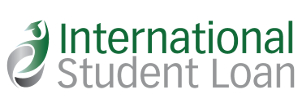The J-1 visa is a nonimmigrant visa that allows foreign nationals to enter the United States for educational and cultural exchange programs. It’s meant to promote international understanding and collaboration between the U.S. and other countries around the world.
To qualify for a J-1 visa, you must first apply for an exchange program (study or work) through an assigned sponsor in the U.S. You can earn a certificate or diploma while studying under a J-1 visa, or even a degree if you have completed at least one academic year of study in your home country prior to coming to the U.S.
When entering the U.S., you are allowed to arrive no earlier than 30 days before the start date on your DS-2019 form, which is issued by your sponsor after they accept your application for an exchange program. Once you are in the U.S., there are certain restrictions on employment that must be followed, such as not engaging in any unauthorized activities or working more than 20 hours per week during school terms and 40 hours per week during school breaks and vacation periods. Additionally, you must maintain health insurance coverage throughout your stay in the U.S. that meets specific requirements, and notify your sponsor of any changes of address within 10 days of moving to a new residence.
If you need to extend your stay beyond what is stated on your DS-2019 form, you must contact your sponsor who will review and approve any requests for extension before submitting them to USCIS for final approval.


Academic Training
Academic Training (AT) is a work authorization program that allows J-1 students to pursue off-campus employment related to their field of study. It is the most common type of off-campus employment for J-1 students and offers a variety of flexible employment situations to help supplement their studies. The U.S. Department of State uses the term "Academic Training" for certain types of study-related employment in the J-1 program. AT is available for up to 18 months or the length of the student's program, whichever is shorter. However, STEM-related academic training can be extended for up to 36 months for college and university students pursuing STEM fields. To apply for AT, students must obtain approval from their designated sponsor and submit an application to USCIS. Overall, AT provides valuable opportunities for J-1 students to gain practical experience in their field while supplementing their studies.
Requirements for Academic Training According to the U.S. Department of State:
- Available only for J-1 students.
- Can be paid or unpaid.
- Maximum total length of academic training is capped at 36 months, inclusive of any prior academic training in the United States as an undergraduate or pre-doctoral student.
- Your primary purpose in the U.S. must be to study, rather than to engage in AT.
- You must be in good academic standing.
- Your proposed employment must be directly related to your field of study.
- A job offer letter is required in order to apply. It is possible to have multiple employers at the same time, but each period of employment must be approved before you begin work.
- You will need to complete an AT application for each employer.
- You must receive approval from your International Student Office before beginning employment.
- You must maintain valid J-1 status throughout your AT and must apply for extensions as necessary. You must also maintain the required health insurance for yourself and your J-2 dependents.
Time Limitations for Academic Training
AT is available to you before the completion of your study program, as well as afterwards. Before completion of your degree program, your allowed hours per week and the duration of the training program are determined by your academic dean or advisor. After graduation, the time limits are as follows:
- Bachelor's and master's students are eligible for up to 18 months of AT or the length of your time in J-1 status, whichever is shorter (for example, a nine-month program means nine months of AT eligibility).
- Doctoral students are eligible for 18 months, as well as an additional 18 months following the completion of their program, meaning a total of 36 possible months.
- Exchange students are eligible for AT corresponding to the amount of time in the program.
Earning more than one degree does not increase your eligibility for AT and AT undertaken after completion of your program will be reduced by any prior periods of AT you may have used. For instance, if you use three months for a summer internship while in a bachelor's program, you will have 15 months left after graduation. Part-time employment counts against the AT limits the same as full-time employment. After completion of your program, AT must be remunerated, meaning you must receive a salary or other compensation for your services.
Post-completion AT must be approved no later than the program end date listed on your DS-2019, or you will lose eligibility for AT.
Working on a J-2 Visa
Spouses in J-2 status are also eligible for work by obtaining employment authorization first. The J-2 visa holder must obtain an Employment Authorization Document from the Department of Homeland Security, U.S. Citizenship and Immigration Services. Money earned by a J-2 visa holder cannot be used to support the principal J-1 visa holder.
In addition, all J-1 exchange visitors and their J-2 dependents must have health insurance coverage that meets the federal J visa requirements while participating in the exchange program.
To apply for a J-2 visa, you must have a valid passport with a valid J-2 visa stamp, your own DS-2019 form, and proof of funding noted on the DS-. The first J-2 dependent must have at least $666 per month in support.
Canadian citizens applying for a J-2 visa do not need to have a visa stamp issued by a U.S. Consulate in their passports.
For more information about the rules and guidelines for working on a J-2 Visa in the U.S., please refer to https://j1visa.state.gov/basics/j2-visa/




